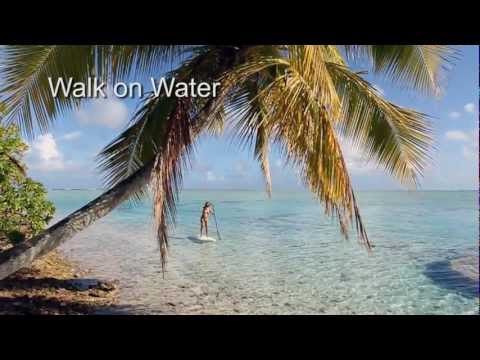How surfers are doing it standing up.
You may have noticed a surfing craze happening across the world - and not just on the local beach. In fact, Stand Up Paddleboarding (SUP or SUP’ing) is being practiced on rivers, canals, lakes, as well as in the shore break and out to sea. It’s actually not a new sport; it began in the 1960’s as a means for surf instructors to position the board to take photographs of their clients on a wave. Extreme sportsman and surf legend, Laird Hamilton, is an advocate of the format and the sport has become popularised as an easy way to get surfing quickly. The surfer is able to catch slower waves due to the length of the board and ability to power onto them using the paddle. The standing position of the surfer also allows a better view of rolling swells that are not always easy to see from the traditional prone position.
Read our Full Guide to SUP
we explore the subject in just the right amount of detail. Click Here SUP GUIDE
Now the sport is making a revival and creating an international feel good factor that is spreading fast. Stand Up Paddleboarding’s resurgence could be due to accessibility and simplicity: one glance at the paddle boarder in action will reveal the essential skills required. Purist surfing has a mystique, maybe an aloofness surrounding it, as hardcore surfers bob around in the swell looking for something worth riding; windsurfing is complex and difficult to learn; and kitesurfing, on initial inspection, looks technical and potentially dangerous. But SUP wins out by being rapid to learn and opening the doors to a wide range of ages and abilities, not just the talented or super fit.
Another distinct advantage of SUP’ing is its lack of weather dependence. Whereas surfers in other disciplines are known to stand around on the beach all day waiting for a swell, wind, or tide, the SUP crowd can get on the water even if it’s a millpond. In fact, a trend has developed to SUP in odd places - including city canals or fast flowing rivers - and making interesting photos for people’s Facebook pages. It appears that the more outrageous your SUP’ing location, the cooler you are.
And due to the considerable size of the boards, many practice the sport by inviting their partners, children, and dogs on board for a leisurely paddle. That social element is a huge bonus, and counter to traditional tales of broken marriages and ‘surfing widows’ left on the beach while the partner heads out to play in the waves. Even yoga and pilates are practiced on board; such is the stability of the boards. But even the size and weight of the standard boards is not a problem - inflatable paddleboards are on the market, as are a variety of shapes and sizes to suit the conditions and ability of the rider.
There is significant crossover between SUP’ing and kayaking with the ability to go exploring. Whereas surfing is contained essentially to a reef or shore break, in SUP the paddle enables you to head off on a trip to another beach, into a lagoon, along a river, or behind a waterfall. The standing position allows a better angle to view the wildlife below - manatees, manta rays, turtles or sharks, all spotted without the glare from the lower aspect of a kayak or surfboard. This scope and versatility is a major draw and might explain why SUP’ing is America’s fastest growing water sport.
And for some who say SUP’ing is somehow ‘watered down surfing’ - or not radical enough - we just need to come back to its greatest advocate, big wave rider, Laird Hamilton. If Laird says it’s cool, it’s cool.
Copyright © James Smith 2013
@jsmithwriter

